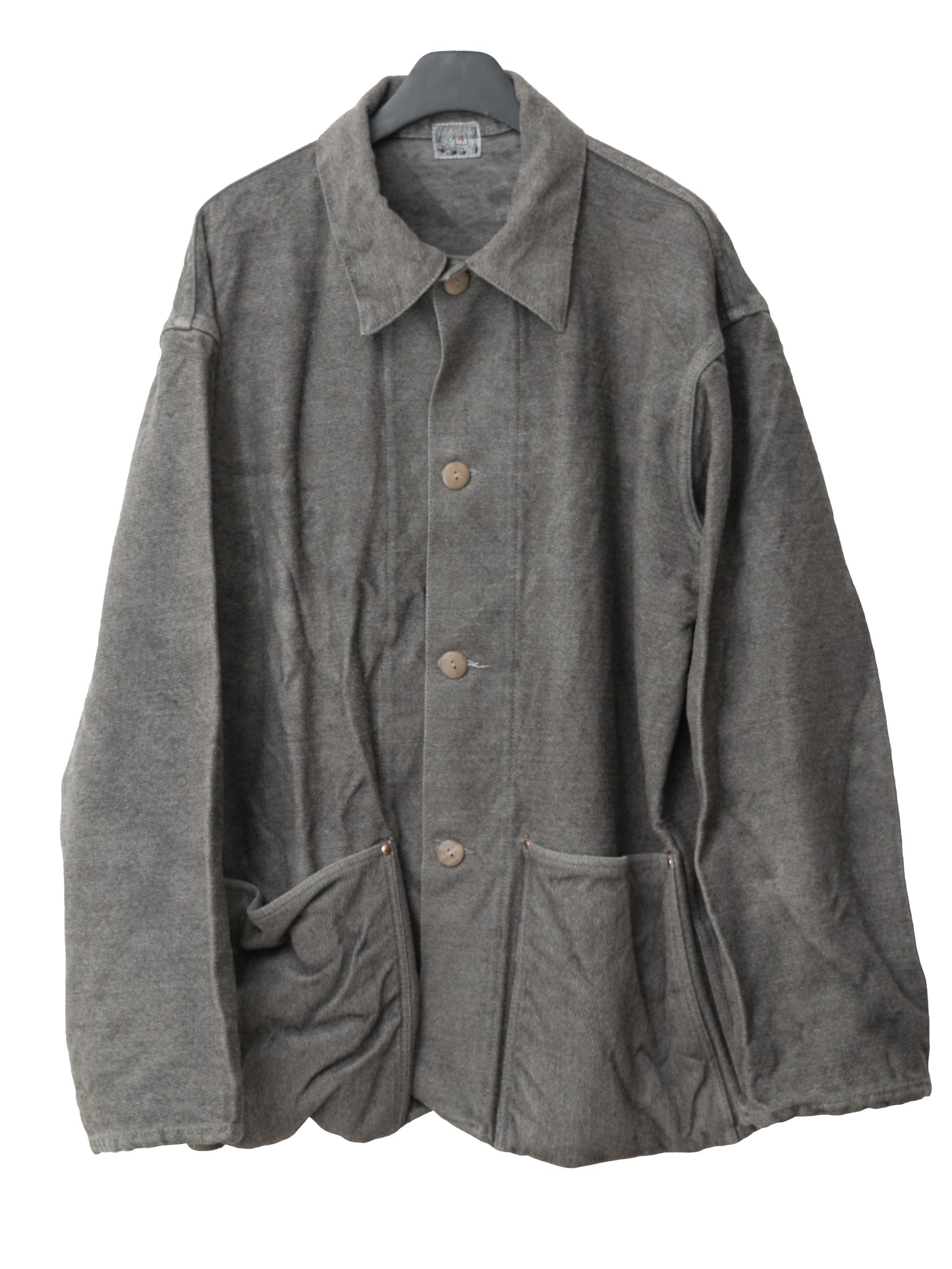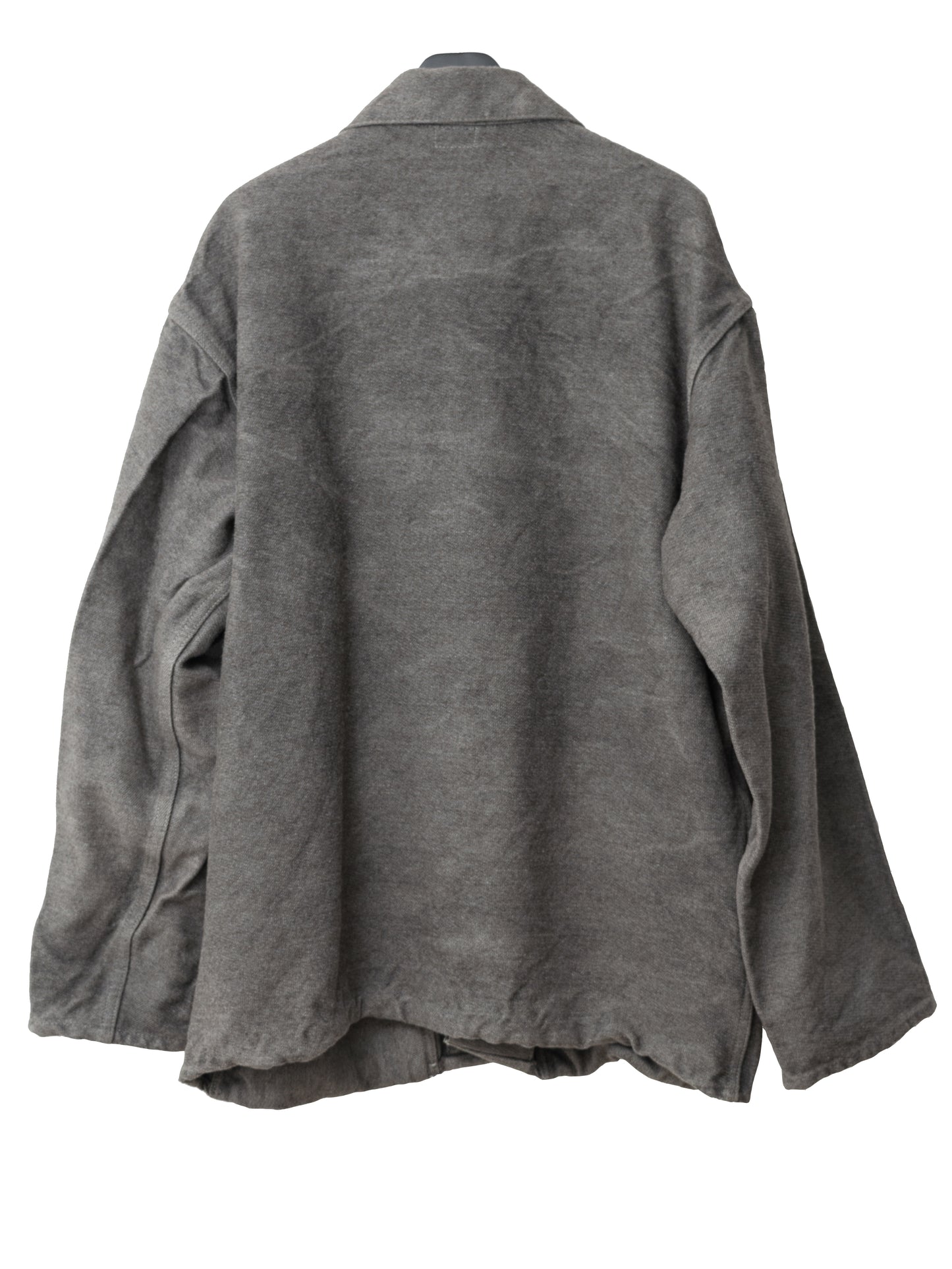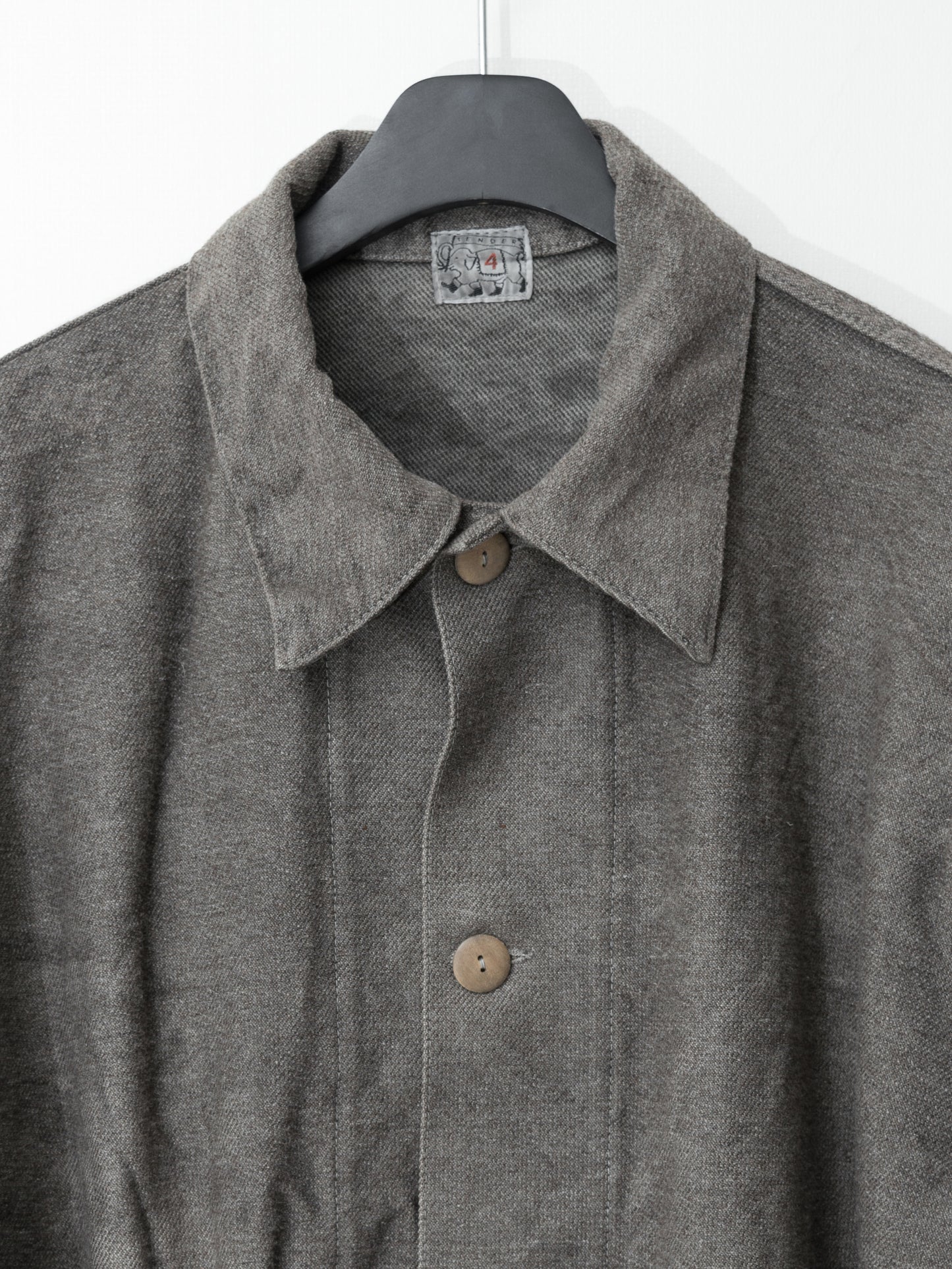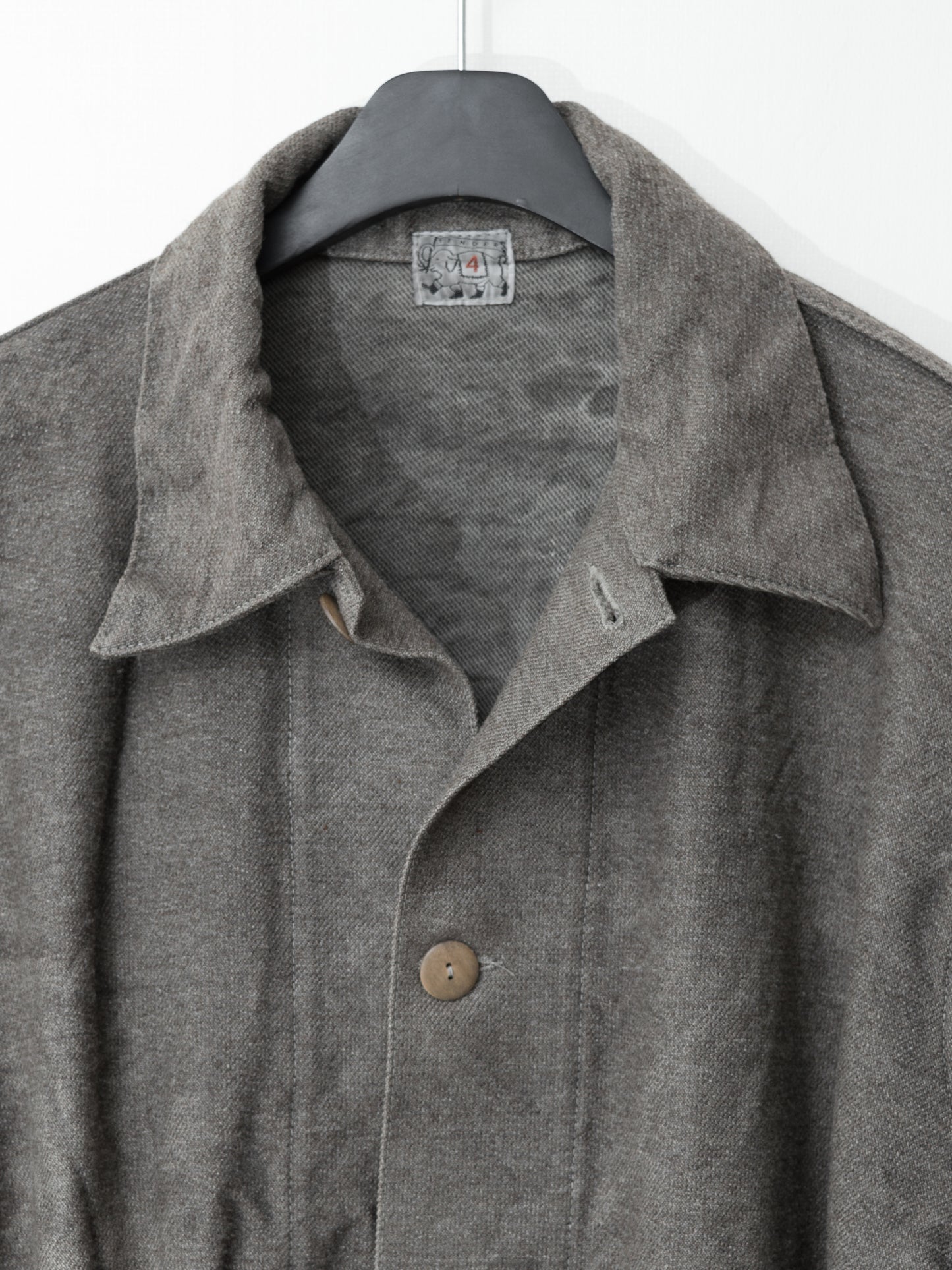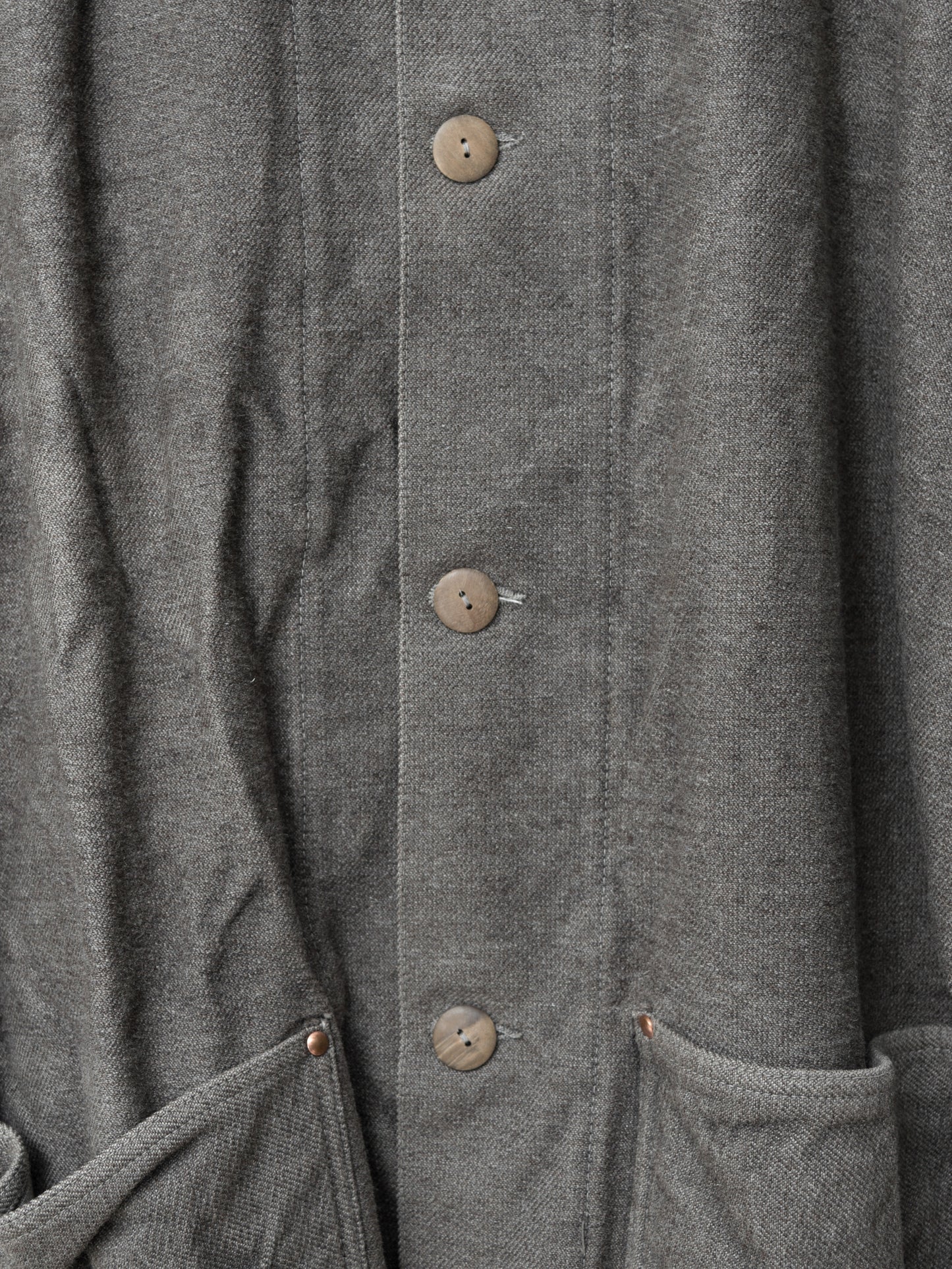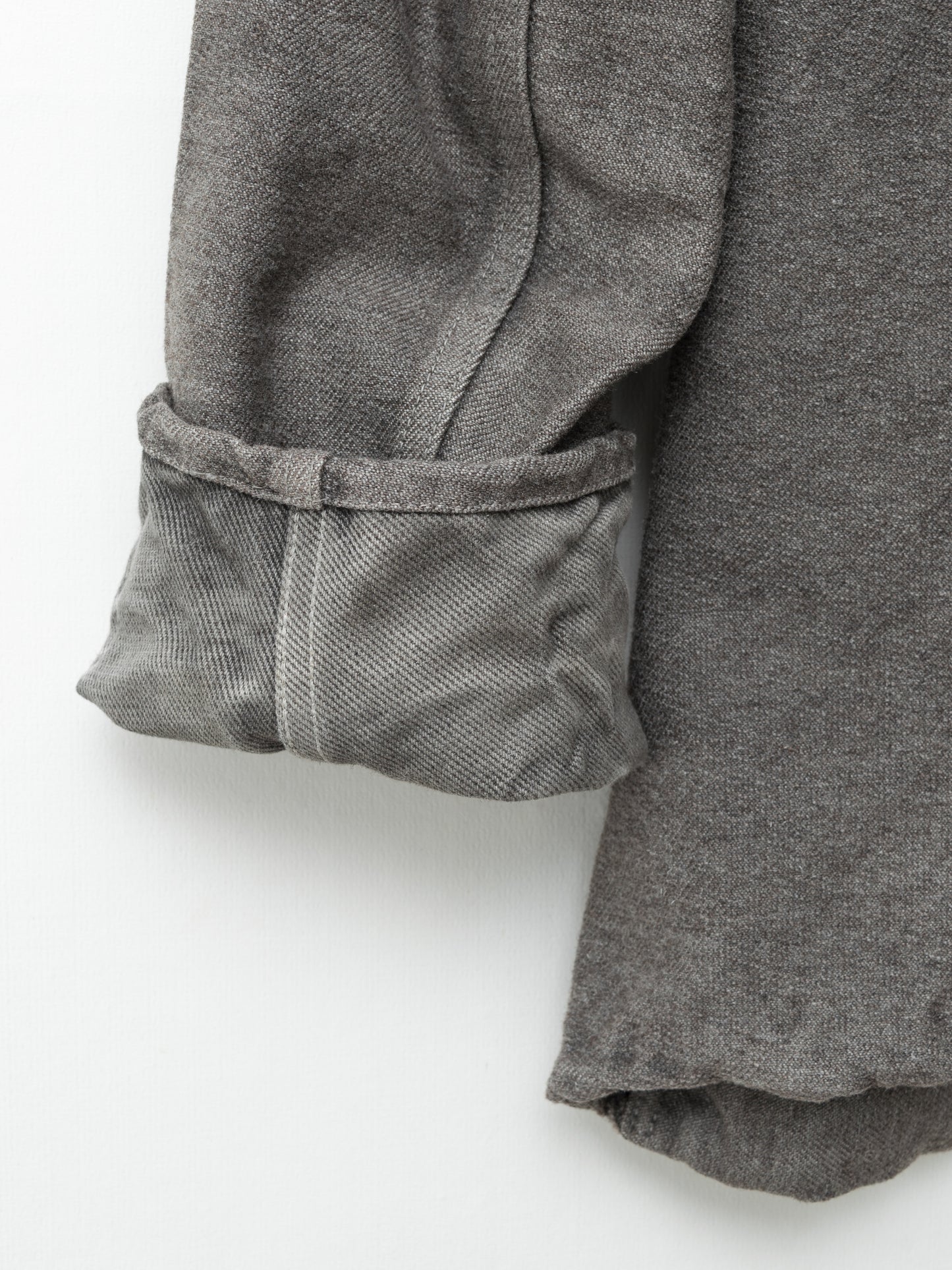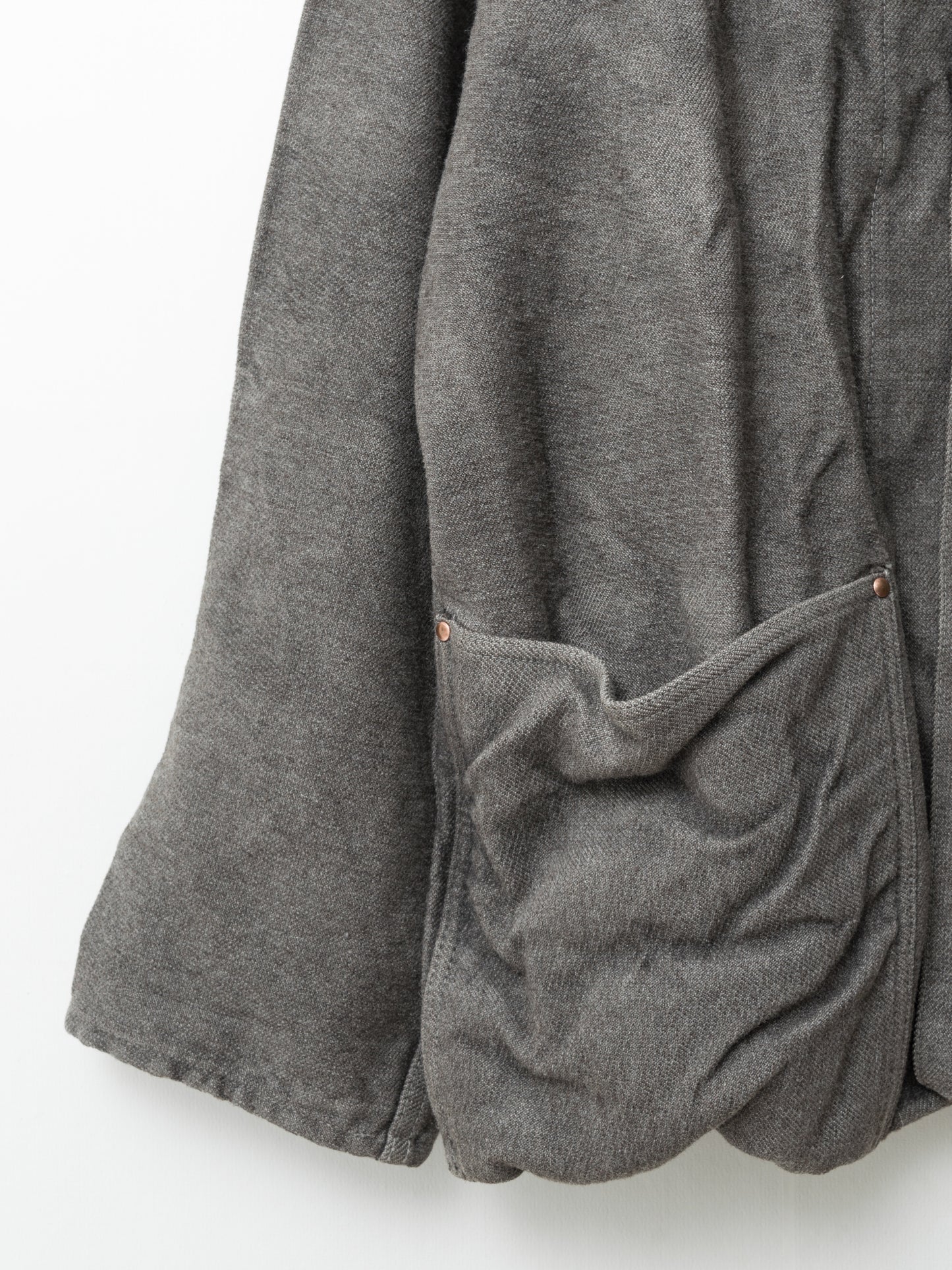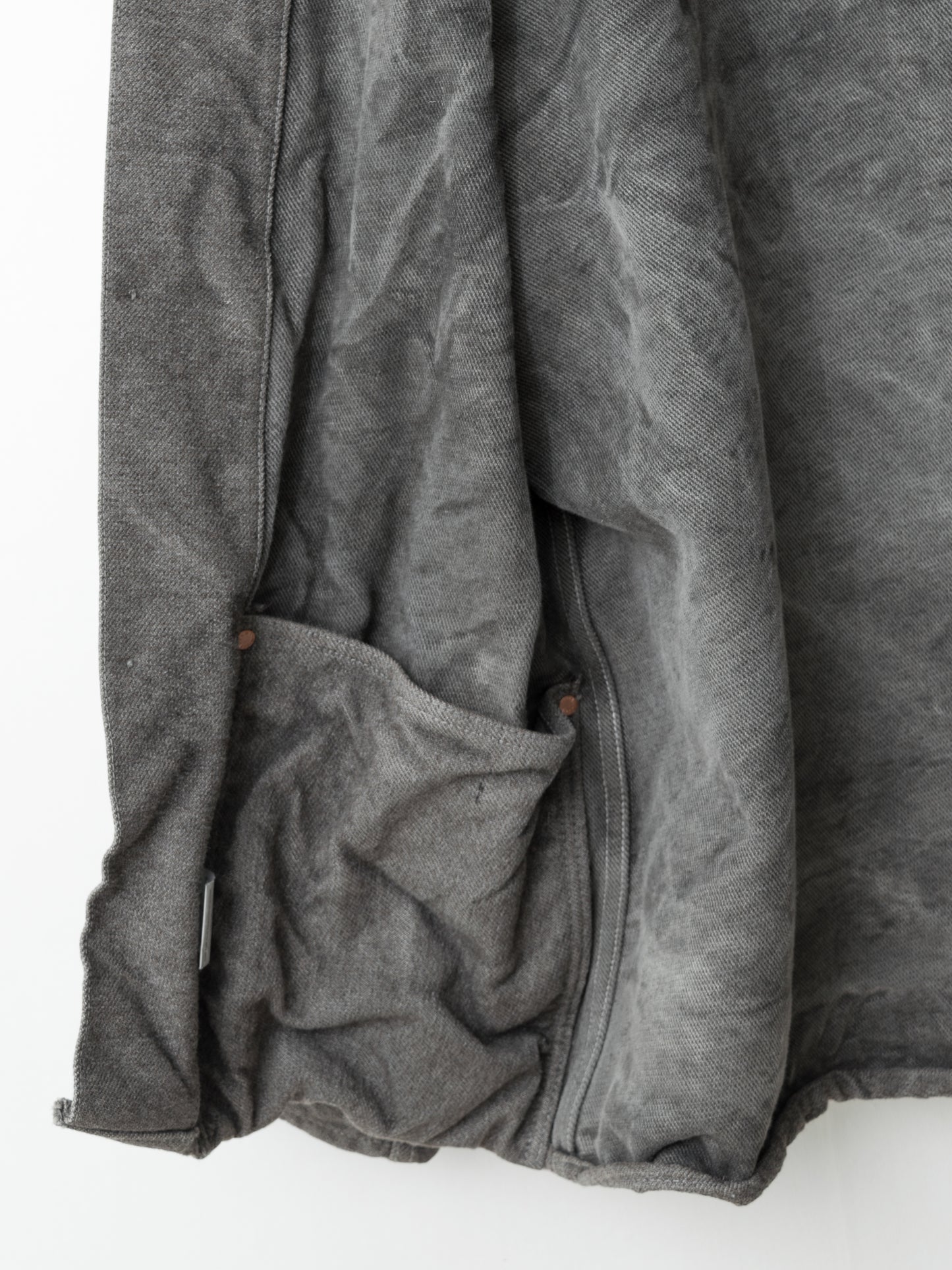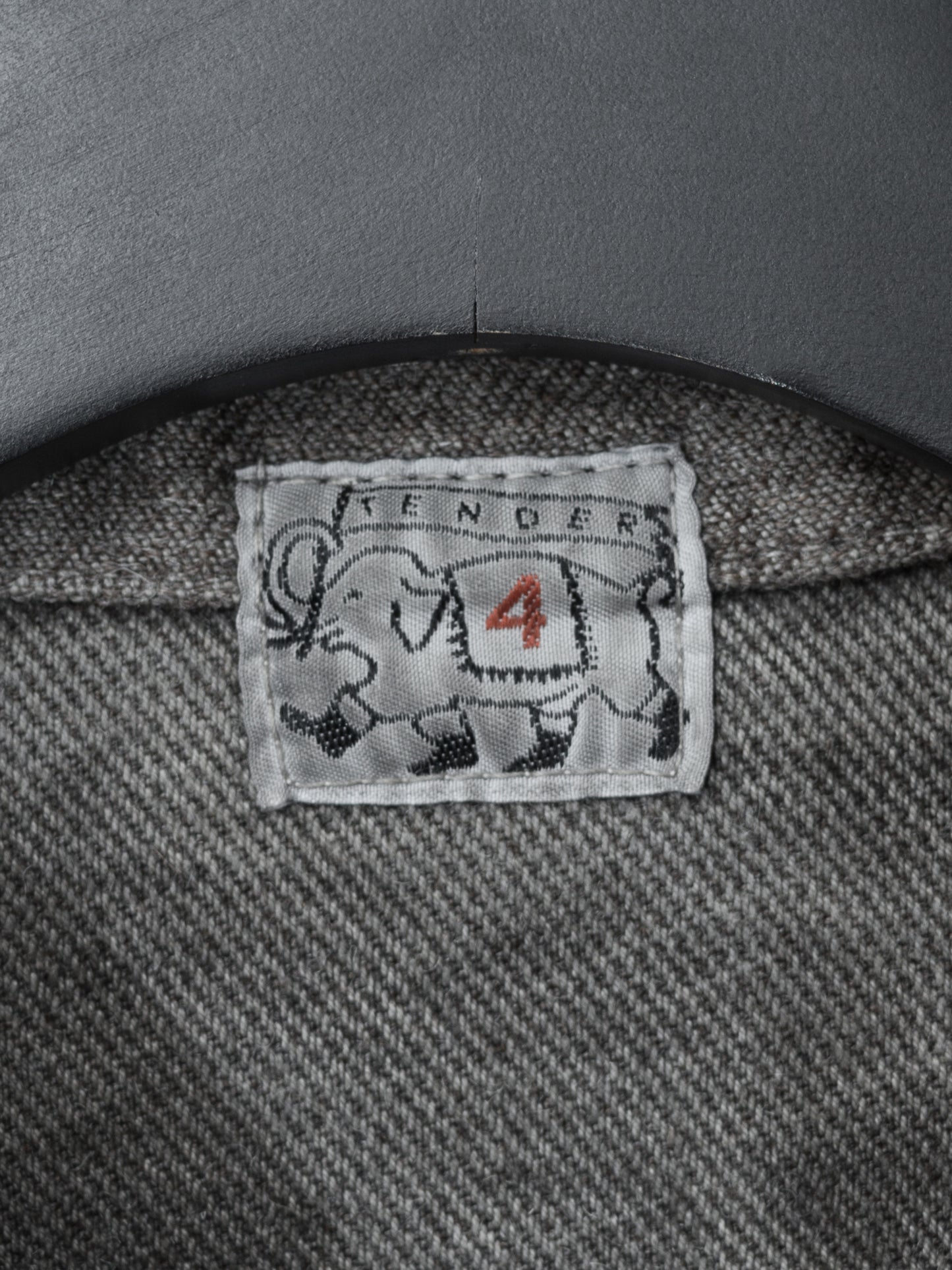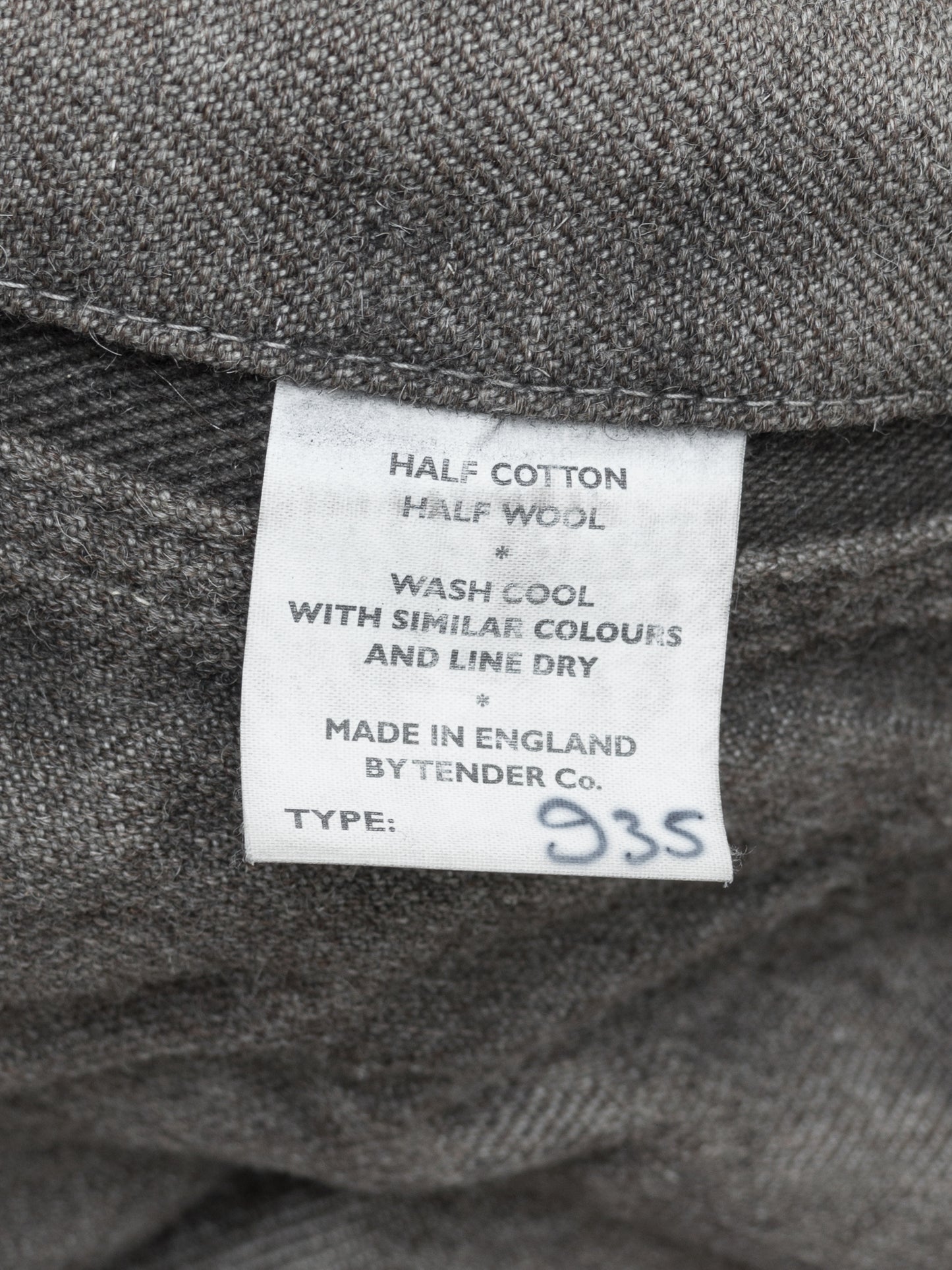1
/
of
10
a/w 18 type 935 collared shepherd's coat indian black dyed ∙ ryeland wool cotton ∙ size 4
a/w 18 type 935 collared shepherd's coat indian black dyed ∙ ryeland wool cotton ∙ size 4
tender co.
Regular price
560 CAD
Regular price
Sale price
560 CAD
Unit price
/
per
Couldn't load pickup availability
description
oversized mid length work jacket in heavyweight ryeland wool cotton. features a large collar to keep out the wind, dropped shoulders, and long patch pockets that wrap around the bottom hem of the jacket into the interior to create mirrored pockets that are accessible from both sides. fully sewn with cotton thread, finished with olive wood buttons, brass universal dome rivets, and a final garment dye treatment in indian black ink.
notes
during my time working at neighbour in vancouver some years ago, i fell in love with a very special delivery of jackets we received from (then) uk-based tender co. the fabric felt organic and alive in a way that i had not encountered before or since, and the simple, unassuming, yet slightly odd cut of the garment was surprisingly charming on body. these jackets were woven from wool shorn from a small flock of ryeland sheep raised in rural scotland, where the endangered ryeland breed had retained their fine fleece as opposed to contemporary breeds which have been optimized for meat production. the story and physicality of these jackets captivated me, and over the years i was able to source a few pieces which have been a treasured part of my personal collection. i've recently acquired one in my true size so i hope to let these larger sizes go to someone who can appreciate and put them to wear for a long time. as with most tender garments, this item preserves its naturally wrinkled state following the dye procedure for a raw, organic sensibility. size 4 (large) but fits like an extra large. recommended for size medium and up.
about tender co.
designed by william kroll, tender has its roots in antique workwear and machinery, especially from the great british steam age. an important face of tender’s british-made clothing is the nurture which is put into the clothes: in their research, design, manufacture, and wear. items are manufactured in small factories, ateliers, and homes around the country, exploring new approaches to traditional weaving, making, tanning, and dyeing.
"I don’t usually start out with an idea of how a garment is going to look, and then work to make it happen-rather I decide on a way I’d like to make something, and then see how it looks once it’s done. It’s a fairly subtle difference, but I find it leads to more interesting things, possibly with more integrity in how the construction matches the product. Possibly this also results in things that are reminiscent of a pre-design(er) era, when the look and feel of things came out of how they were made, rather than how they were designed."
material
- 50% ryeland wool 50% cotton body
Wool for woven and knitted garments in A/W 2018 were shorn from a small flock of Ryeland sheep raised in the Scottish Borders. Their wool was offered exclusively to Tender and has never before been used for clothing. The Ryeland breed is one of the longest-established in Britain, thought to have originally descended from Spanish Merinos. Medieval records show a flock of 300 Ryeland sheep at Dore Abbey in Herefordshire, where the wool was collected and processed for shipment overseas. Ryeland wool was particularly prized in Italy and Flanders, for spinning into the finest yarns which were used as the standard for other wools. In the 16th Century, Elizabeth I is said to have received a gift of Ryeland wool stockings, and thereafter insisted on wearing only clothes made from the yarn. The ‘Wool Sack’ on the Chancellor’s seat at the House of Lords was originally stuffed with raw Ryeland fleeces. Today, Ryeland wool is unusual as its varied colours and relatively slow growth make it unsuitable for commercial farming, however its texture, weight, and natural colours are second to none.
- indian black overdye
First described by the naturalist Pliny the Elder around the middle of the First Century CE, alongside black dyes obtained from burnt ivory (“elephantinon”) and cuttlefish (“sæpia”), he simply says: “We have indicum also, a substance imported from India, the composition of which is at present unknown to me.” The pigment is in fact a dried and powdered clay, traditionally used as a house paint, or mixed with size (dissolved starch) to make Indian ink. True Indian black was later replaced with crushed charcoal as a more readily available alternative.
- dry clean or hand wash cool
measurements
| unit | shoulder | chest | sleeve | back length |
|---|---|---|---|---|
| cm | 59 | 66 | 66 | 78 |
| inches | 23.25 | 26 | 26 | 30.75 |
condition
rank: S
S: like new, unused
A: used, excellent condition
B: some signs of wear, great condition
C: general wear throughout, good condition
